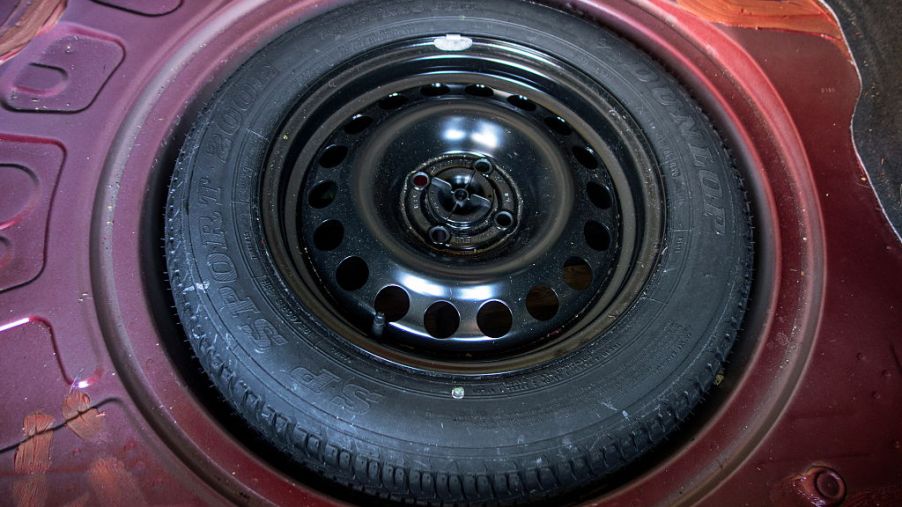
What Is a Donut Tire?
One thing most drivers dread is coming face to face with a flat tire. Keeping our tires in top shape helps, but sometimes a flat just can’t be avoided. It rarely happens, but almost everyone with a vehicle has had to deal with it at some point. We would go to the trunk, get out the extra tire, mount it, and go.
In the last few years, however, the tires residing in our trunks have not been the same. In fact, they’re a bit smaller in diameter than the normal wheels on the car. That’s the donut tire, and it’s not meant for driving, at least not for very far. When flat tires occur, you have something that gets you going again in a pinch. Here’s a brief guide explaining why we have them, how they should be used, and what to expect if you need to use one.
Why we have donut spare tires
Car manufacturers are always looking for ways to save space and money. Offering a full-size spare tire with a new car would mean taking up trunk space with a deeper tire wheel well as we saw with older cars. Also, by doing away with the tire and jack, the car becomes a few pounds lighter.
That small bit of weight loss means better fuel economy, saving you more money at the pump. Donut tires fill the need for a spare but don’t cost as much money to manufacture.
Speed and distance limitations for donut spares
Donut spares are for temporary use only. The point is to get you going straight to a repair shop to get the flat tire fixed or replaced. They aren’t for any long-term use and you should never use them for any length of time longer than it takes to go to the shop. Typically, these spares are good for about 70 miles only. Any longer than that and you risk another blowout, which could cause more damage to your car.
Spares typically have a maximum speed limit you can go while using one. Most donut tires will come with a sticker showing what speed limit it can handle. Sometimes, you can find the information in the car’s owner manual. If not, go with the general rule of thumb, which is only 50 miles an hour.
What to expect when using a donut tire
Since the donut tire differs significantly from a normal-sized one, handling of your vehicle will not be the same. Driving on one of these spares usually gives you poor tire traction and maneuvering. It’s not much different from having poor treads on a normal tire. Take curves and turns carefully to avoid any loss of control.
Also, when braking, you may notice the car will pull to the side that the donut spare is on. The donut is a smaller tire so your vehicle will be off-balance a bit. That’s why you want to make sure not to drive too fast or turn the wheels too sharply.
Donuts vs sensors
If you’re driving a vehicle with wheel sensors, like in an ABS system, expect your car’s warning lights to get confused. With a smaller diameter tire, the wheel will turn faster than your normal ones. Your sensors will detect that and alert you something’s wrong when there probably isn’t.
Get the flat tire fixed and back on the car as soon as you can. The sensors will return to normal once you’re no longer out of balance. Also, don’t expect features like traction control to work properly with the donut. Drive carefully and get to a repair shop fast.
Donut tires are a quick fix when you’re stranded with a flat, miles from home. Be sure to only use them temporarily and expect the drive to be a bit rough. While it’s not the most optimal choice, these tires will get you as far as the shop, saving you from spending a lot of money on a tow truck.


